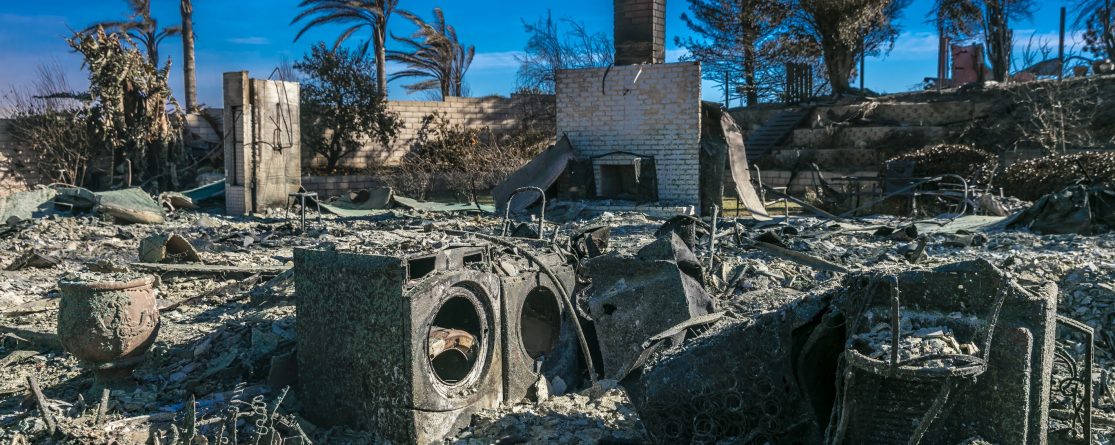According to data sources, 85% to 95% of homes in the U.S. have homeowner’s insurance. And roughly 5 out of every 100 policyholders will file a claim each year. Those that file a claim will more often than not, find themselves working with an insurance adjuster to get the claim settled.
The role of the adjuster is an important one. He or she will complete a full inspection of your property, evaluate the damages, and determine what is covered and owed to you under the insurance policy you’ve purchased.
Being prepared for an insurance claim, especially during frequent disasters like we’ve seen in 2020, can make a huge difference in how quickly and smoothly the process goes. Knowing how to work with your adjuster, what to have handy, and what will best help them do their job can mean the difference between it taking days or months to settle your claim. Ultimately, helping your adjuster will help you get on the road to recovery and rebuilding quicker, and with as little stress as possible.
So how do you best work with your insurance adjuster during the claims process? For that, we turned to two of our alumni who’ve been in the business for years: John O’Brien and Matt Daniels. Both have worked almost every type of claim, and every type disaster, all over the country. In fact, they’re so great at what they do, we asked them to help us!
John has developed a one of a kind training course for new adjusters called the Adjuster Success Method. This course goes beyond licensing to help new adjusters learn how to get a job, the tools they’ll need, and how to set up a system to work claims that will lead to lasting success in the industry. Matt is such a pro that we’ve asked him to teach some of our Xactimate classes. His unique story is also featured on our blog.
Tips for working with your insurance adjuster
Below is advice from our professional adjusters on how you can best be prepared for a claim and a to work with them.
#1: Have a Plan
This great advice for everyone, but it is crucial if you live in a disaster-prone region.
- If you need to evacuate, do you have friends/family you can stay with or will you need a shelter?
- Have a ‘go-bag’ ready or mostly ready with items you’ll need if you have to leave your home.
- In addition to clothing and necessary personal items, the bag should include insurance paperwork, contact numbers, important addresses, bank/mortgage information, etc.
- Lay out your recovery plan step-by-step. First, we need to call the insurance company. Second, call the roofing contractor. Third, fourth, etc.
When disaster strikes, it is a highly stressful situation. Having a firm plan and knowing what steps to take can help you take control (as much as possible) and alleviate stress.
Speaking of contractors: Matt highly recommends having or saving contact information for local, trusted contractors on hand. If you have their information, you can hopefully be one of the first to get on their schedules. Unfortunately, after a disaster, predatory actors and scam artists crawl out of the woodwork to try and take advantage of the chaos. So have a roofing contractor, a water mitigation specialist, etc. so you can call them instead of trying to research all the strange folks that are going to show up and ask to fix your home.
#2: Create a Home Inventory List
Make a list of important personal property items and store it in a few locations: keep it in your go bag, give a copy to someone else, make sure it’s stored in the cloud, etc. When it comes to losses, the more information you can provide to your adjuster, the better.
You can find home inventory templates online that are helpful to get started. Candidly, these are intimidating to say the least. But having this information stored means you don’t have to try and figure it out in the aftermath of a disaster. Here are a few examples: Allstate, NYCM, Real Simple. There are also some apps that can help you inventory your home.
Insurance companies also recommend doing a walk-through video of your property. This may not be enough to verify the details, but you can use it create your inventory if needed. If nothing else, make sure you have information on the “big stuff.”
- Age of your home and roof
- Record of other big items on the property: washer/dryer, refrigerator, computer/gaming equipment, large or expensive furniture, etc.
- List any details you have on age and replacement value in today’s dollars
- Provide information on upgrades made to your home with receipts for material and work
- After a disaster, provide:
- An account of what happened to cause damage, to the best of your knowledge
- Concerns or issues that may not be obvious or visible. While adjusters are trained to spot and evaluate damages, you know you’re home best so make sure to point out anything that is out of place or different.
- Any contractor estimates or recommendations that you’ve been given
#3: Understand your Policy
Understanding your insurance policy is crucial after a disaster. It helps set realistic expectations and avoid disappointment and confusion. If there are provisions you don’t understand, ask your agent or adjuster. They are familiar with these items and will be happy to explain them to you in simple (read: not overly-complicated lawyer/legal) terms.
There are two items in your policy that are especially important to understand after a disaster or it could cost you.
- Mitigation: In general, mitigation means ‘to minimize degree of any loss or harm.’ In terms of your insurance, it means YOU are responsible for stopping any additional damages in so much as you are able. Most policies include a provision that says you need to take reasonable measures to make sure that no additional damage happens. This might mean placing a tarp on your roof. Or boarding up open windows. Or removing valuables from an unsecured home.
- Additional Living Expenses: This portion of your insurance policy lays out what will be covered in the event your home is unliveable. These provisions have time and financial limits so understanding what is covered, and what isn’t, is crucial if you don’t want to pay out of pocket for expenses like a hotel.
Inspection Tips
The best thing you can do when it comes to your inspection is to be available. In the wake of disaster, this is often easier said than done. But the more accessible you are to your adjuster, the quicker they can inspect, adjust, and settle your claim. Here are some other home inspection tips from our adjusters:
- Make sure your dogs or other animals are put up. Even if they don’t pose a physical danger to the adjuster they can be underfoot and in the way.
- Make sure that the damaged areas are accessible. It’s best to move your cars out of a damaged driveway, or remove fallen limbs that are in the way. But it’s important to photograph any damages before you make changes so you have a record for your adjuster.
- If you are not going to be there for the inspection make sure that you leave someone who is over 18, competent, and able to give the adjuster the information he or she needs to work your claim.
- Be flexible. Chances are, your adjuster is working on a large stack of claims so same day and/or evening requests are usually not realistic.
2020 has been almost unprecedented in terms of the number and frequency of natural disasters. (As of the posting of this article, we are 1 hurricane away from tying the all-time record for number of named storms.)
There have been too many disasters, they are hitting too often, and there simply aren’t enough adjusters to handle them. But as you move forward with your claim and the settlement process, remember that adjusters do not get paid until your claim is closed so they want it handled every bit as quickly as you do.
Working with your insurance adjuster and being prepared for a claim will help smooth the process and facilitate getting your settlement as quickly as possible. You can find more helpful tips from AdjusterPro Co-Founder Adam Gardiner in our How to Prepare for an Insurance Claim article.



